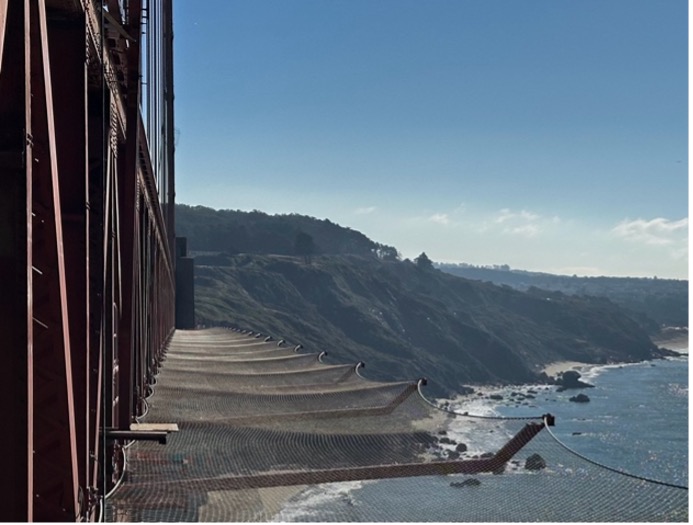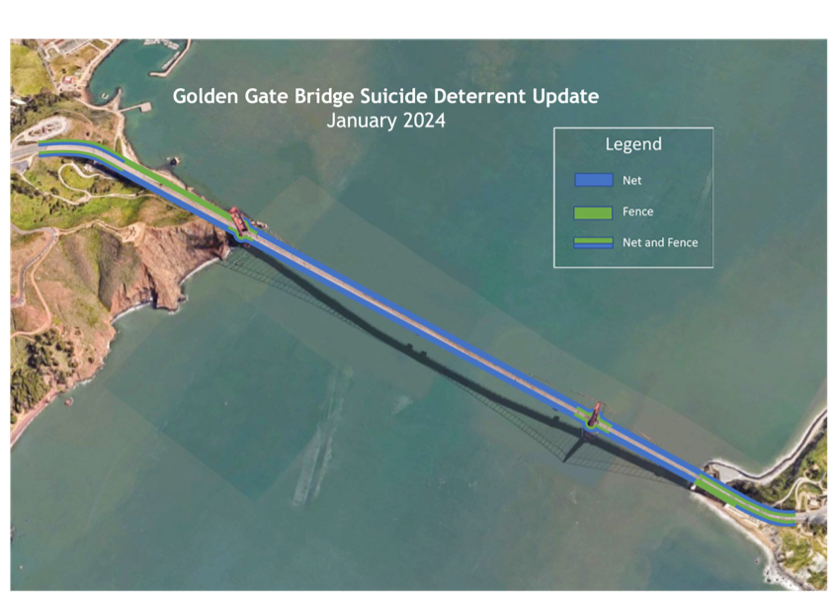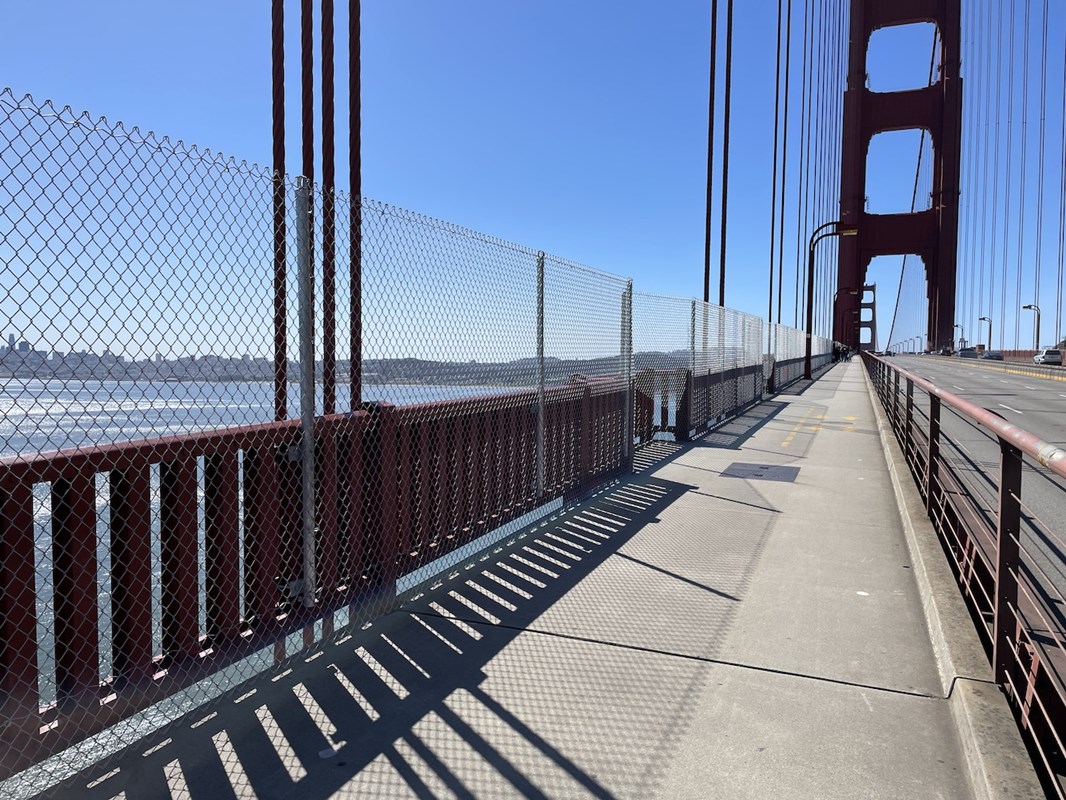As of January 1, 2024, the Golden Gate Bridge now has a continuous physical suicide barrier installed the full length of the 1.7-mile span. The suicide deterrent system, also known as the net, has been installed on the east and west sides of approximately 95% of the Bridge. In some areas of the Bridge, due to ongoing construction or design factors, vertical fencing is in place instead of or in addition to the net.
The purpose of the net is to reduce the number of deaths associated with individuals jumping off the Bridge. The net is a proven design that deters people from jumping, serves as a symbol of care and hope to despondent individuals, and, if necessary, offers people a second chance.


The net draws inspiration from similar barriers erected to deter suicides on tall buildings and bridges around the world. The community-selected design was chosen for its proven effectiveness at reducing suicides and its minimalist aesthetic. The net consists of marine-grade stainless steel netting installed 20 feet below the sidewalks and extending out 20 feet over the water. Jumping into the net is designed to be painful and may result in significant injury.

The Net Is Already Saving Lives
The net is already working as intended to save lives and deter people from coming to the Bridge to harm themselves. Over the last 20 years, on average, there have been 30 confirmed suicides at the Golden Gate Bridge every year. In 2023, while the net was still under construction, there were 14 confirmed suicides, reducing the average number of suicides by more than half. While the net was under construction, the majority of suicides occurred when people found gaps where netting was not yet installed and jumped.
There have also been several instances where people have jumped into the net, and we, along with partner agencies, have successfully rescued many of them. Sadly, we have not been able to rescue everyone.
Rescue Operations and Training
The Golden Gate Bridge net is designed to deter people from jumping from the Bridge. In cases where someone falls into the net, teams of trained professionals stand ready to perform rescues. District staff have been coordinating and training with local fire departments and law enforcement agencies to respond to net rescues in a timely manner and with minimal disruption to traffic. Thus far, the interagency teams have performed several successful rescues from the net using existing personnel and equipment.
The District is also building a training net at a Southern Marin Fire Station in Mill Valley. The net replica, installed on a station fire tower, will assist first responders in conducting ongoing training for net rescues into the future. The training net is expected to be complete in early 2024.
Commemoration Ceremony
Over the next several months, the contractor building the net will finalize work in sections of the Bridge where netting has recently been installed. This work does not impact the effectiveness of the net and is anticipated to be complete in April of this year.
The District will plan a commemoration ceremony to mark the completion of this life-saving project when the last phase of work on the net is complete. Details about the event will be announced in the future.
Looking Ahead
We are pleased that the Golden Gate Bridge now has a physical suicide barrier in place the full length of the span and look forward to this project saving dozens of lives every year. There is, however, still more work to do.
The contractor building the net has also been tasked with replacing the maintenance traveler system on the Bridge and has incurred delays to that work that are expected to last into 2027. The traveler installation requires that short sections of the Bridge remain unobstructed to allow access for workers and equipment during construction, and netting cannot be installed in these areas until the traveler work is complete. These areas, noted in the diagram above, have vertical fencing in place that will remain until the work is complete and netting is installed.

The total project cost, including construction and administration, is approximately $224 million and is funded through federal and state grants, Bridge tolls, Prop 63 monies, and individual and foundation donations. More information about the project can be found here.